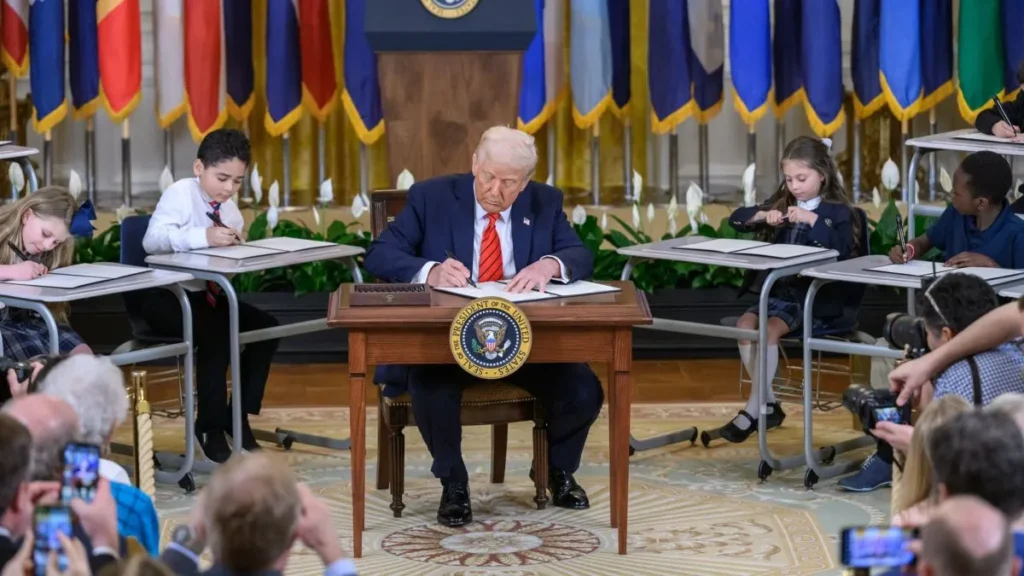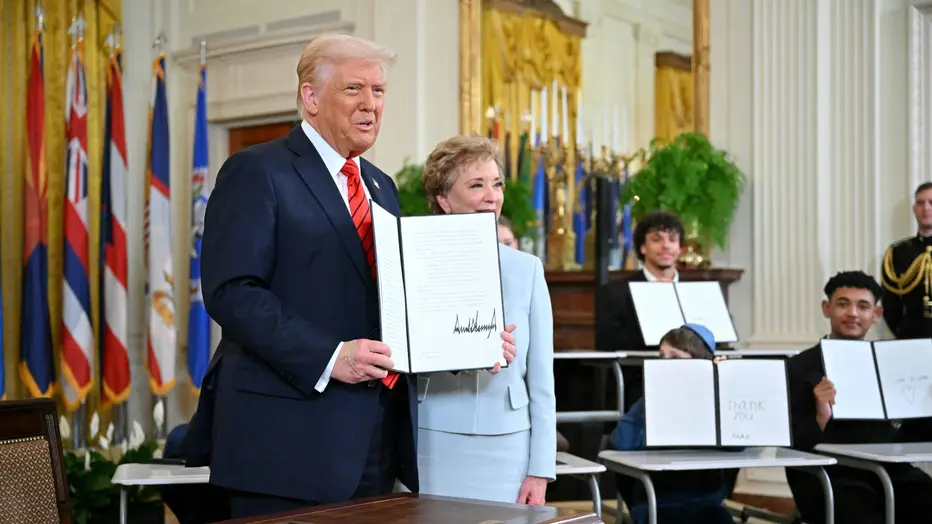In a groundbreaking policy shift, former U.S. President Donald Trump signed an executive order aimed at dismantling the U.S. Department of Education. This decision aligns with a long-standing conservative objective to reduce federal involvement in education and transfer authority to individual states. In a ceremony at the White House, Trump showcased the signed order, marking a major shift in American education policy.
The Conservative Push to Dismantle the Department of Education
The movement to abolish the Department of Education has been a central goal of conservative policymakers for decades. Established in 1979 under President Jimmy Carter, the department has been criticized for increasing federal control over education. Many Republican lawmakers argue that education should be managed at the state and local levels, believing that centralized policies hinder innovation and efficiency.
Trump’s Justification for the Executive Order on Education Reform

Trump defended his decision by highlighting the lack of improvement in student performance despite substantial federal funding. He argued that empowering states with full control over their education systems would lead to more effective policies, better resource allocation, and improved student outcomes. According to Trump, “The federal government should not be in charge of how schools operate. Local communities know best how to educate their children.”
Immediate Impact of Trump’s Executive Order on Education Reform
The executive order mandates the gradual reduction of the Department of Education’s responsibilities, shifting them to state governments. Key federal programs, including student loans, special education grants, and Title I funding for low-income schools, may be reassigned to other government agencies or managed at the state level. However, the full elimination of the department requires congressional approval—a process that could take years and face legal challenges.
Supporters Welcome Trump’s Executive Order on Education Reform
Many conservative leaders and education reform advocates have praised Trump’s decision, emphasizing the benefits of decentralizing education. They argue that eliminating federal oversight will:
- Provide parents and local communities with greater control over curriculum choices.
- Reduce bureaucratic regulations that burden teachers and school administrators.
- Improve resource allocation by allowing states to manage funds more efficiently.
- Encourage competition and innovation in education policies.
Criticism and Opposition to Trump’s Executive Order on Education Reform
Despite support from conservatives, the executive order has been met with strong opposition from educators, civil rights groups, and Democratic lawmakers. Critics argue that dismantling the Department of Education could:
- Increase disparities in education quality between states.
- Remove federal protections for disadvantaged students, including those with disabilities and low-income backgrounds.
- Lead to inconsistencies in education standards across the country.
- Disrupt federal student aid programs, affecting millions of students.
Education Secretary Linda McMahon, who is overseeing the transition, reassured the public that critical programs will continue to function. However, many educators remain concerned about the long-term effects of reduced federal oversight.
Legal and Political Challenges Surrounding Trump’s Executive Order on Education Reform
Eliminating a federal agency is a complex process. While Trump’s executive order sets the foundation for dismantling the Department of Education, Congress must pass legislation to complete the process. Given the divided political landscape, securing enough support for this move will be challenging.
Additionally, legal battles may arise, particularly concerning federal education laws such as the Individuals with Disabilities Education Act (IDEA) and Title I funding. Many states rely on federal assistance to maintain educational programs, and sudden policy shifts could create disruptions.
Potential Future of U.S. Education After Trump’s Executive Order on Education Reform
If the Department of Education is abolished, states will have full control over their education policies, funding, and standards. While this could lead to greater flexibility and innovation, it may also result in significant disparities between states, with some prioritizing education reform while others struggle with funding constraints.
In the long run, this policy shift could reshape American education by reducing federal influence and emphasizing state governance. However, the ongoing debate over whether this change will benefit or harm students remains unresolved.
Conclusion
Trump’s executive order on education reform marks a historic turning point in U.S. education policy. While conservatives hail it as a victory for state rights and local control, opponents warn of potential risks associated with eliminating federal oversight. The fate of the department now depends on congressional action, and the outcome of this policy shift will have long-lasting implications for students, educators, and policymakers across the country. As the transition progresses, stakeholders will closely monitor the impact of these changes on the future of American education. Read more news at funtourstation.



